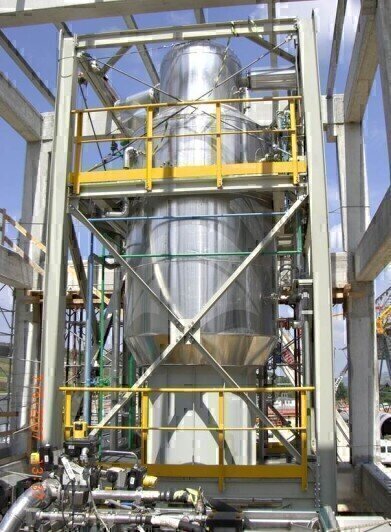Water/Wastewater
Enhanced System Offers Significant Cost Advantages for Zero Liquid Discharge
Jul 07 2015
Aquarion Group (Germany) announced the introduction of ZLD.eco2 at ACHEMA 2015.
The ZLD.eco2 process sets new standards in lowering the cost of Zero Liquid Discharge (ZLD) systems in terms of both OPEX and CAPEX. The ZLD.eco2 process uses a series of innovative filtration and separation technologies to reduce the subsequent evaporation of residual waste products to a minimum and lower energy requirements. The system’s modular design also reduces the plant footprint.
“Aquarion is focused on constantly improving the efficacy and cost-effectiveness of ZLD solutions. Based on the technologies used, we believe that ZLD.eco2 is the lowest cost ZLD system available today,” said Karl Michael Millauer, Chief Executive Officer of Aquarion Group.
“The term ‘eco’ in ‘ZLD.eco2’ signifies the economic advantages of this system. Moreover, the new ZLD.eco2 represents a significant enhancement over the original ZLD-ECO process introduced by Aquarion last year,” he added.
Compared with conventional systems without pre-concentration, ZLD.eco2 requires about 20% less energy. Also, since the evaporation system is smaller, less cooling energy is needed for the condensation process. These savings can amount to as much as 80%. Further savings can be achieved thanks to the modular construction of the system. The savings in terms of staffing are around 20%, while commissioning costs are also lower by 20%. Additionally, the reduced consumption of chemicals consumption is another advantage. Thanks to savings on different levels, investments in ZLD.eco2 have a very short payback period.
At the heart of the system is a new high-pressure reverse osmosis stage that utilizes Circular Disc (CD) Module technology developed by Membran Filtrations Technik (MFT), one of the Aquarion Group’s companies. ZLD.eco2 involves a pre-treatment process, which can either be chemical-physical or biological depending on the user, and an ultra-filtration stage to filter out residual organic material, followed by multi-stage membrane technology designed to concentrate non-organic waste material more densely.
After the first two reverse osmosis stages entailing pressures of up to 80 bar, the residual concentrate contains around 20% of the total waste water volume. This is then subjected to a third reverse osmosis stage where pressures of up 200 bar are reached. This stage uses MFT’s CD module through which water takes a circular path, thereby reducing pressure losses.
The high pressure warms the concentrate to approximately 70°C. This is then vaporized in the subsequent low pressure stage, which acts with the membrane technology to form a “hybrid system,” giving the concentrate a manageable consistency. The thermal energy is fed back into the system and used to increase energy efficiency. This significantly reduces the energy requirements of the entire system. The volume of waste products still present after the maximum pre-concentration produced by the high-pressure membrane technology is significantly lower than with conventional processes. As a result, the evaporation stage with ZLD.eco2 can be considerably shorter.
The Circular Disc Modules are available from MFT, and ZLD.eco2 systems are available through Hager+Elsaesser (H+E), another Aquarion Group company that has operations around the world.
Events
May 05 2024 Seville, Spain
May 13 2024 Munich, Germany
May 23 2024 Beijing, China
May 23 2024 Beijing, China
Jun 10 2024 Algiers, Algeria













